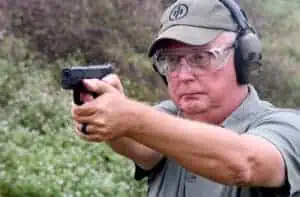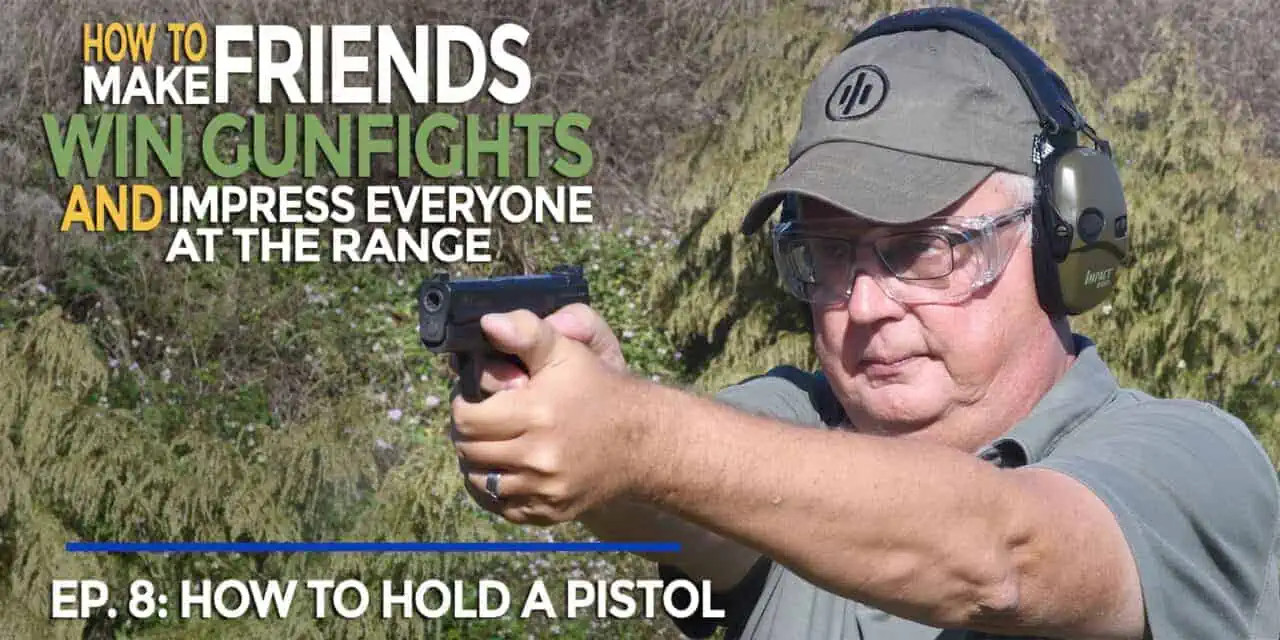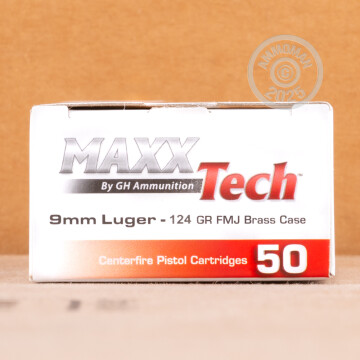How To Hold A Pistol
Ask almost any gun owner if they know how to shoot, and chances are, they’ll say “yes.” The holes in their targets may say something different, but they’ll say “yes” anyways. Ask almost any pistol owner if they know how to hold a pistol, and they’ll likewise say “yes.” Based on what I saw on a recent trip to my local public pistol range, there are plenty of pistol owners who know how to pick up a pistol and put it in their hands, but precious few know how to hold a pistol in order to get consistent hits on target.
A Gripping Story
There is a surprisingly large amount of information out there on how to hold a pistol. People have been writing on this subject since the invention of the modern handgun. In that time, conventional wisdom has shifted quite a bit. One-hand only grips, hip-shooting techniques that forego the use of sights in favor of speed, and other methods of getting your rounds on-target have come and gone. Even the Weaver stance, a staple of Jeff Cooper’s Modern Technique Of The Pistol, is fading from view as more and more trainers are moving towards the Modern Isosceles grip and stance.
We talked a little about the Modern Isosceles stance in a previous article. Let’s talk about the modern thumbs-forward grip and how it can help you get better hits when they matter the most.
Learning The Rule Of Thumbs
There is a lot to be learned from shooting a practical pistol match or taking any kind of force-on-force training. Awkward shooting positions are the norm in those kinds of events. You’ll soon find out that the perfectly balanced stance you learned on the practice range goes right out the window once the real-world gets involved. But a good grip on your pistol is important in any shooting environment. How you grip your gun plays a big part in how easy it is to get your sights on target after your first shot, and how tightly-grouped your shots will be on that target. Stances come and go, but a good grip on your pistol lasts forever.
Let’s pause for a moment here to talk about terms we’ll be using. Your strong hand is the hand that pulls the trigger. For right-handed people, it’s usually their right hand. You lefties follow along as best you know how. The support hand is the other, non-dominant hand. It provides (that’s right, you guessed it) support for the gun. Surprisingly, it’s the support hand that plays the biggest role in learning how to hold a pistol properly.
Getting A Grasp On How To Hold A Pistol
Holding a pistol with just your strong hand is actually quite easy. Most pistols are designed with just that purpose in mind. Your fingers wrap around the grip, your index finger wants to go on the trigger, and your thumb goes right where it should. The only issues I’ve seen people have with holding a pistol with their strong hand is holding it high enough on the grip for proper control. When a pistol recoils after each shot, it recoils more or less straight back. Therefore, the more you get your hand in line with that recoil, the more you can control it. Getting your strong hand as high on the grip as you can, without interfering with the function of the gun, is a great foundation for getting a good grip on your pistol.
Your arm should be almost, but not quite fully extended, with the elbow joint unlocked. This puts the pistol in a natural place for your support hand to join up with your strong hand to help you keep your sights on target. The pistol should be level with your eyes and pointed at the target. Almost all modern pistols have good sights that will do the job. Use them to make the shot. Leave the shooting from the hip stuff to the actors in a cowboy movie.
Support For Your Support Hand
Here’s where things go off the rails. Using your support hand effectively is the key to getting a better, more effective grip on your gun. Getting the most out of your support hand means getting as much of it as you can on your gun. Not on the bottom of the grip, not on the wrist of your strong hand, but on the gun itself. Your support hand isn’t there to support the weight of your gun, it’s there to support your ability to get good hits on-target.
 Your support hand should fill in any gaps in your strong hand only grip. The meaty part of your support hand palm should be just behind the fingertips your strong hand. For right-handed people, this means your left hand should be high up on the left hand side of the grip, rotated slightly forward. Your support hand thumb should be right alongside the frame of your pistol, pointing right at the target. Your strong hand thumb should be right behind it, in-line and also pointing at the target.
Your support hand should fill in any gaps in your strong hand only grip. The meaty part of your support hand palm should be just behind the fingertips your strong hand. For right-handed people, this means your left hand should be high up on the left hand side of the grip, rotated slightly forward. Your support hand thumb should be right alongside the frame of your pistol, pointing right at the target. Your strong hand thumb should be right behind it, in-line and also pointing at the target.
Gripping your pistol this way helps you control your gun in a number of different ways. Rotating your wrist forwards makes it easier to grip your pistol with your support hand. This tightens your groups, helps you control trigger jerk, and smooths out the gun’s movement during recoil. Controlling your pistol with your strong hand is relatively easy. More than anything else, it’s the effective use of the support hand in a two-handed grip that improves your shooting over using just one hand.
What About Gripping A Revolver?
This is a good time to talk about how a good grip on a wheelgun is slightly different than how to hold a pistol. There are two features on a revolver that require us to slightly alter our grips. The first is the slight gap in between where the cylinder ends and the barrel begins. This gap means that some of the gases and flame from the round’s ignition will leak out through that gap. If your thumb is covering up that gap, you’ll be in for a very nasty surprise at the very least. At worst, you’re looking at a serious thumb injury.
The second, less-dangerous reason to adjust your grip on a revolver deals with how revolvers work. An uncovered hammer is common on many revolvers. On some guns, like the classic movie cowboy single action revolver, that hammer will need to be cocked before every shot. Most modern revolvers cock the hammer as you pull the trigger. These are called “double action revolvers.” Some of them have shrouds over their hammers, which means you can’t manually cock the hammer on them, but that shroud provides for a smoother draw. Some, however, have unshrouded hammers, which means you can cock the hammer on them for a slightly lower trigger pull.
It’s Hammer Time!
 Both of these features (the gases escaping from the cylinder and the need to cock the hammer) mean you’ll need to move your support hand thumb slightly when you shoot a revolver. Moving the support hand thumb back, so it crosses over your strong hand thumb, gets it out of the way of the nasty stuff coming out of the cylinder gap. It also places your support hand in the perfect position to cock the hammer if needed.
Both of these features (the gases escaping from the cylinder and the need to cock the hammer) mean you’ll need to move your support hand thumb slightly when you shoot a revolver. Moving the support hand thumb back, so it crosses over your strong hand thumb, gets it out of the way of the nasty stuff coming out of the cylinder gap. It also places your support hand in the perfect position to cock the hammer if needed.
Note that this thumbs-crossed method does not work with semi-automatic pistols. If you’re holding a pistol like you would a revolver, that puts your thumbs right in the path of the slide as it moves backwards under recoil. This hurts, a lot, so don’t do it.
On The One Hand…
Let’s talk about one-handed shooting for just a bit. When you shoot one-handed, that hand has to do the work of two. This means gripping your gun even harder in order to keep it under control during recoil. I’ve had some measure of success squeezing the hand that’s not gripping the gun in order to augment the grip of my gun hand. I’ve also found that extending my arm out even more, to where my elbow is locked, helps stabilize my aim when I’m shooting with just one hand. In addition to this, I’ve found that canting my gun slightly inwards, towards my body, improves my accuracy when I’m shooting with just my support hand.
These are techniques I found work for me only after I sent hundreds of rounds downrange and performed hours and hours of dry-fire practice.
How Hard Should You Hold A Pistol?
One of the biggest questions I hear about how to hold a pistol is how hard you should grip the gun. The answer is, a little more, especially with the left hand. All the technique in the world matters little if you’re not holding the gun enough to allow those techniques to take hold and work their magic on your accuracy.
Learning how to properly hold a pistol is a combination of dry fire practice and live fire verification. You safely practice your grip and stance with an unloaded gun or a blue gun inside your home. You then check to see if what you’re doing at home works well in the real world by going to the range and shooting live rounds. If your groups improve and you’re able to get your sights back on target faster after each shot, congratulations, you’re learning from your efforts. If you’re not seeing improvement, change something up during dry-fire, such as adjusting your support hand. Learning how to hold a pistol is a process. That process will take some time to complete.


